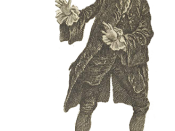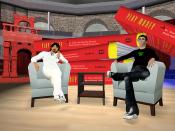A misleading image presented to the vision. An illusion is the precise difference between the appearance and reality of someone or something. What one sees and takes at face value is not always the truth, and this is the exact technique that the Prince of Denmark uses in Shakespeare's play, The Tragedy of Hamlet, Prince of Denmark. Hamlet hates King Claudius and cannot accept him as his father. As a result, Hamlet portrays a state of insanity throughout the play in an attempt to deceive King Claudius and avenge his father's death. Hamlet enhances his insane condition during his encounter with Ophelia, and his confrontation with his mother. The image of madness is Hamlet's only option if he is to fulfill his oath to his father in murdering King Claudius.
Hamlet's bizarre behavior of late leads the Lord Chamberlain, Polonius, to come to the conclusion that Hamlet may be mad due to his strong love and affection for Ophelia.
Polonius draws this conclusion from a letter that Ophelia received from Hamlet which reads,
"Doubt thou the stars are fire,
Doubt that the sun doth move,
Doubt truth to be a liar,
But never doubt I love" (II.ii.124-127)
With this letter, Polonius persuades King Claudius into spying with him when Ophelia goes to visit Hamlet in the lobby. When Ophelia meets Hamlet in the lobby, Hamlet suspects that something is wrong and that Ophelia is apart of it. To protect himself, Hamlet has no choice but to destroy his relationship with Ophelia. He does this through screams of madness, violent pushing, and harsh comments. Hamlet denies his current fondness for Ophelia and tells her that she was foolish in believing in their love. If that was not enough, Hamlet goes so far as to shout, "Get thee to a...



Good work
good work and keep on writing .i liked your way of analysing every sence in the play.
2 out of 6 people found this comment useful.